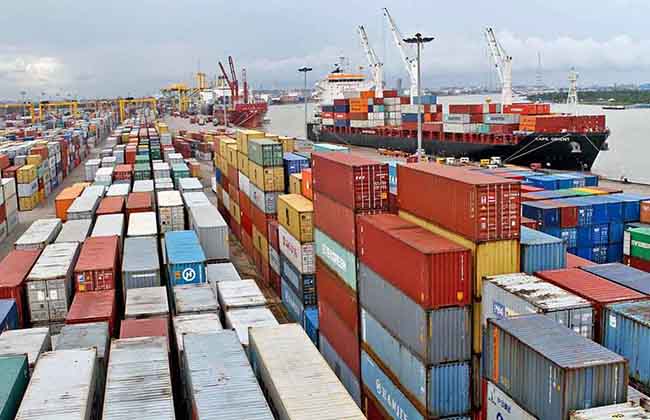
Engagement of private sector has brought about dramatic improvement in the container handling capacity of the country’s premier Chattogram Port, official sources said.
Use of modern technology in locating, loading and unloading containers has significantly reduced the time of stay of the foreign ships at the terminals.
The expenses of the port also fell significantly, besides a rise in income, the sources said, adding the frequent work stoppages by the workers also became a matter of the past.
In eight months (May-December) of 2007, a total of 92,687 TEUs (Twenty Equivalent Units) of containers of 97 ships were handled at the Chattogram Port, which rose to as high as 1,149,675 in one year in 2021.
The improvement was visible after the tasks of container handling of the Chittagong Container Terminal (CCT), New-Mooring Container Terminal (NCT) and Pangaon Container Terminal (PCT) were outsourced to the private sector.
Chattagram Port Authority (CPA) Chairman Rear Admiral Md. Shajahan said the situation at the port improved significantly after new projects were undertaken and private sector was involved in container handling. Many of the port yards now remain vacant due to speedy handling of the containers, he added.
Port sources said 60 percent of the containers of CCT, NCT and PCT were handled by the private sector company, Saif Powertec Ltd., in 2021. The remaining 40 percent works were done by six other companies, they added.
Out of the total 2,883,000 TEUs, Saif Powertec handled 1,740,964 TEUs, while others handled 1,142,190 TEUs of containers, the sources said.
CPA Chairman said the port once had a capacity to accommodate 49,018 TEUs of containers, which was raised to 53,518 TEUs by developing new yards through recovering illegally occupied lands of the port. Currently, there are 34,226 TEUs of containers in the port, he added.
He also said the trend of enforcing frequent strike by the workers also changed due to involvement of the private sector in container handling.
Until 2007, the port was plagued with numerous problems, such as mismanagement, bribery, work stoppages, lack of coordination among different agencies, lack of modern technology to handle containers and inefficiency of operators, leading to unusual delay in release of imported goods from the ships, the sources said.
The foreign ships had to stay at the port for 10 to 12 days adding to the cost of the ship owners. The image of the country was also harmed by the overall situation at the port. Importers could not release their goods on time, while exporters suffered due to delays in the release of raw materials, the sources added.
The average stay time of the ships at the port fell to three days after two container terminals, CCT and NCT, were handed over to the private sector for container handling, they said, adding the improved situation led to increase in arrival of foreign ships at the port.
The expense of the port per container also fell to Tk 1,200 after 2007 from Tk 2,500 in pre-2007 period.
Business sources said there was a time when containers could not be located for delivery after unloading from the ships and the containers remained in the terminal for 25/26 days. The importers had to pay USD 100 to 200 per container for their release.
After 2007, initially the mobile technology was used to locate the containers. Later the authorities introduced Container Terminal Management System (CTMS) dashboard, which made locating of the containers easy.
The loading and unloading time and costs also fell significantly after the private sector took over the container handling tasks. The cost of loading and unloading of containers fell to Tk 1,200 from Tk 2,500, while the number of containers handled in an hour rose to 25-30 from 10-12.
The port authorities took initiative to start operations of five new jetties 2015. The responsibilities of terminals 2 and 3 were given to Saif Powertec, while terminals 4 and 5 were given to joint venture companies, the sources said, adding the situation improved further after the new terminals were given to the private companies for container handling.
The Chattogram Port was placed 58th among 100 high performing ports across the world in the London-based international shipping journal Lloyd’s List in 2020 following improvement in its operations powered by the involvement of the private sector.
Managing Director of Saif Powertec Tarafdar Ruhul Amin said, “Initially, we handled the terminal using experts hired from ports in the developed countries. Our capacity has improved in phases in the past 15 years. Our efforts have brought about positive result and the Chattogram Port now stands 64th among 100 high performing ports worldwide.”


